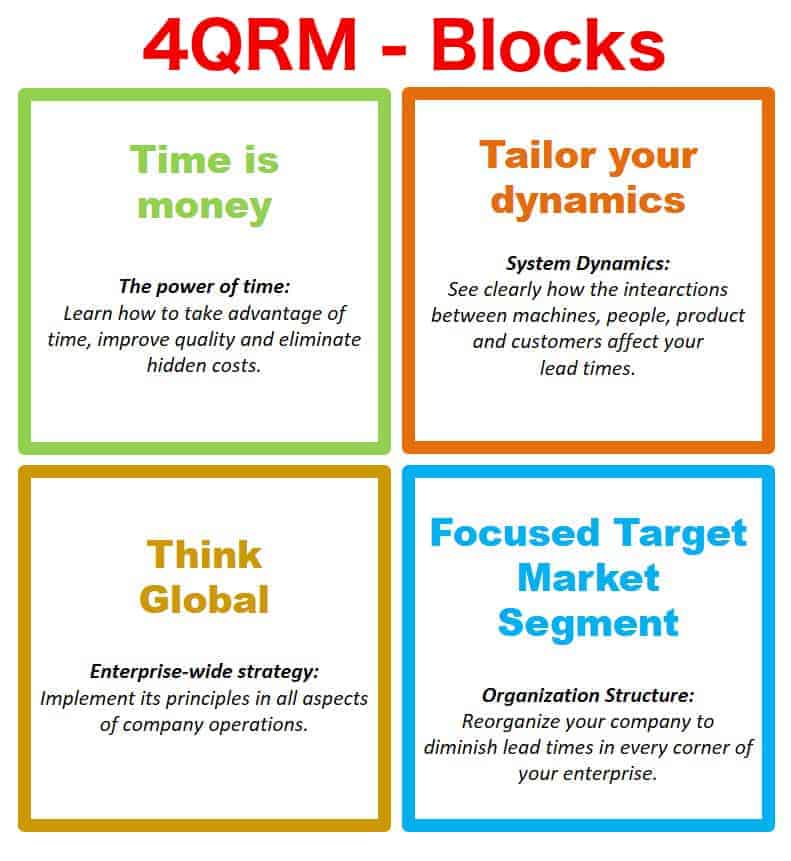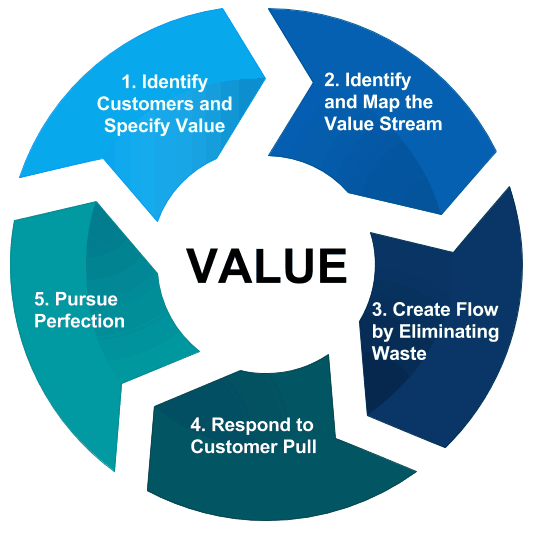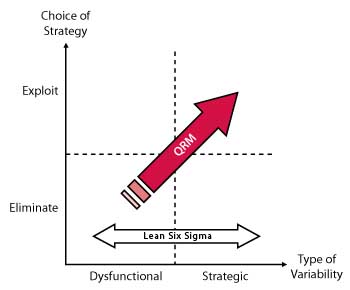
Quick Response Manufacturing (QRM)is a strategy for reducing lead times across all functions of an organization as well as relentlessly focusing on reducing lead time both on the shop floor and in the office operations. The resulting improvements in speed and responsiveness increase the organization’s agility and responsiveness, resulting in a competitive advantage.
Many well-known Lean Manufacturing tools have been developed for high volume/low variety, or ‘mass production’ environments. Think of techniques such as Pull Systems, Kanban, Line Balancing, and Heijunka for instance, often applied to fast-moving production lines. However, these tools often do not translate well to low volume/high variety environments, which require short batch runs, higher levels of customization, and fast response to changes in customer demand.
*click the above links to learn more
Push vs Pull System Explained

If your organization is already familiar with lean manufacturing principles, you know that lean manufacturing is about identifying and limiting waste. As a result, inventory is reduced, and the ability to meet customer needs quickly is attained. In addition, QRM goes one step further with these principles, focusing the entire company on quickly responding to customers and eliminating waste, wasted time, and wasted money.
FIRST: QRM quickly identifies and implements processes or eliminates unnecessary processes to cut lead time in all aspects of your operations. Simultaneously, working to shorten the time between when an order is received until the delivery. This is accomplished while maintaining the ability to customize a job/product for a customer’s specific need.
The QRM focus is on the entire business, from purchasing through job/product delivery. This includes reducing the time needed to process an order, optimizing the supply/materials chain, and reducing the time required to approve necessary/needed changes. The goal is not to work faster, but to eliminate any waste putting the priority on the right objectives.
QRM vs. Lean
Lean Manufacturing is based on principles that were developed in the auto manufacturing industry in an environment of high volume production of similar products. QRM was designed for lower volume operations, varied production volume, or the manufacturing of customized products. DELL Computers is the leading example of QRM, which made its mark for quickly shipping computers made to customers’ individual specifications.
Variability vs. Dysfunctional Variability

Lean manufacturing strives to eliminate waste by minimizing variability, QRM distinguishes between “strategic variability” and “dysfunctional variability”.
“Strategic Variability” adds value to the product line. For example, DELL Computers allows their customers to choose options that they want for their computers. Allowing this created a high-level variability in the product, but also a high level of customer satisfaction.
“Dysfunctional Variability” does not add value, these are unnecessary options that are not desired by customers. These “Dysfunctional Variables need to be eliminated. They add unnecessary costs. Here is an example of dysfunctional variability. This would be imprecise manufacturing such that the product size varied more than customers could accept. Dysfunctional variability results in rework, product returns, and missed delivery dates, costing time and money, thus resulting in dissatisfied customers.
Quick Response Manufacturing goes beyond lean, however, it does not throw out or ignore lean principles and methods. Therefore, it expands and refines lean principles bringing a sharper focus on cutting lead times.
Benefits of Quick Response Manufacturing
There are several significant benefits resulting from implementing Quick Response Manufacturing. Three of the most important are:
- Increased customer satisfaction – We’re in a highly competitive world in which waiting time is wasted time. If you can reliably deliver the products the customer wants, and do so quickly, you’ll have happier customers. These customers will return to buy from you again.
- Increased cash flow – By delivering products to customers quicker, you get paid quicker and your overall cash flow increases. This gives you more flexibility and a greater ability to respond to market changes.
- Beating the competition – Quick Response Manufacturing drives innovation and prevents a company from resting on its laurels. As the result, a competitor innovates and steals away customers. The relentless focus on further decreasing lead times pushes an organization to continually be innovating. Again this results in improved quality, new product features, and a focus on being close to and serving customers.
For medium and small businesses focusing on delivering customized products to their customers, Quick Response Manufacturing provides the framework and methods to drive success. It’s not an easy path, as it requires a relentless commitment to reducing lead times. You will find that the rewards are well worth the effort.

